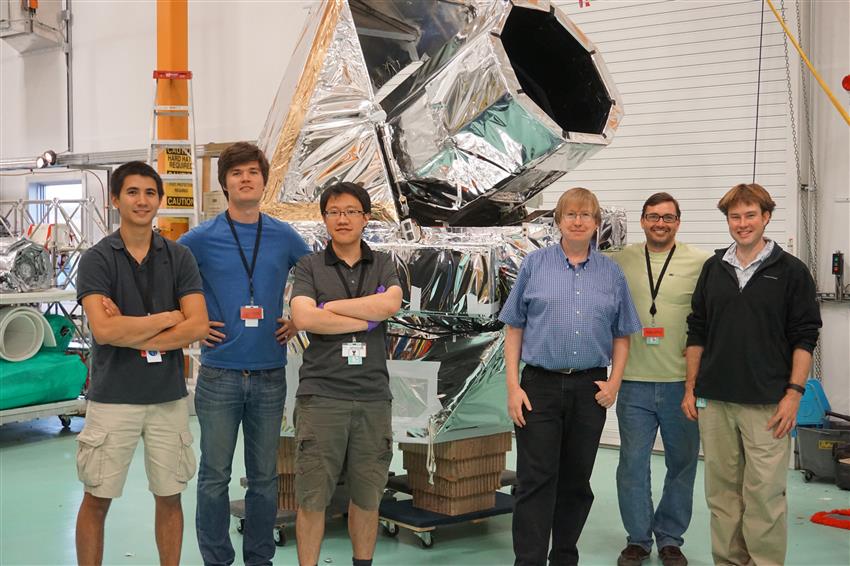University of Toronto students send a telescope soaring through the stratosphere
On , a group of four students, studying astronomy, physics and engineering under the supervision of Professor Barth Netterfield from the University of Toronto (U of T), had the unique opportunity to test their Balloon-borne Imaging Testbed (BIT) telescope in a near-Earth space environment. Thanks to the CSA's stratospheric balloon program, Stratos, the students gained access to a balloon flight during the Strato Science campaign that took place in Timmins, Ontario. This flight allowed them to demonstrate that the BIT telescope will be capable of providing the highest resolution, extended-field visible light images of any instrument other than NASA's Hubble Space Telescope.
Since atmosphere causes distortion and limits the performance of ground telescopes, the half-metre telescope pioneered a new method for making high-quality astronomical observations from a balloon. As such, it demonstrated that it is possible to look at stars and galaxies at a much higher resolution than can be done from the ground. From the balloon flight, U of T proved that their pointing system was much better and cheaper than any other available technologies on the market. Eventually, a platform inspired by the BIT telescope could be used to observe the atmosphere of giant exoplanets.

Image of the team who worked on the BIT telescope. From left to right: Javier Romualdez (Ph.D. Student), Mathew Galloway (Ph.D. Student), Steven Li (Masters Student), Barth Netterfield (Professor at University of Toronto), John Hartley (Ph.D. Student) and Richard Massey (Professor at Durham University - United Kingdom). (Credit: Barth Netterfield/Steven Li)
Enabling students to pursue their passions
When working on a space technology development project, what all students are aiming for is the opportunity to test and fly their innovation. By providing access to stratospheric balloon flights, the CSA is enabling students to achieve that goal. Balloons have proven to be perfect for training the next generation of engineers and scientists by allowing them to carry out their scientific experiments or technology demonstration missions in a short period of time and obtain results quickly.
Hands-on experience for the benefit of all
During the Strato Science campaign, U of T students were able to share their knowledge with other specialists in the domain and to showcase their technology. This has allowed them to gain access to a larger network of international experts and improve their overall learning experience. The opportunities that are given to these students allow them to develop a strong skillset, making them more employable and attractive on the marketplace.
Pushing technology further
Thanks to the CSA's Flights for the Advancement of Science and Technology (FAST) initiative, the university received a contribution of $499,983 on . It will enable the team to test an improved version of BIT, called SuperBIT, during an upcoming long-duration balloon flight launched from New Zealand. SuperBIT has the potential to provide large images of distant galaxies with details comparable to those seen through the Hubble Telescope. If the platform proves to be successful, SuperBIT would usher in an era of low-cost, frequent access to space-like observing conditions that would benefit a wide range of astrophysics objectives.
- Date modified:
